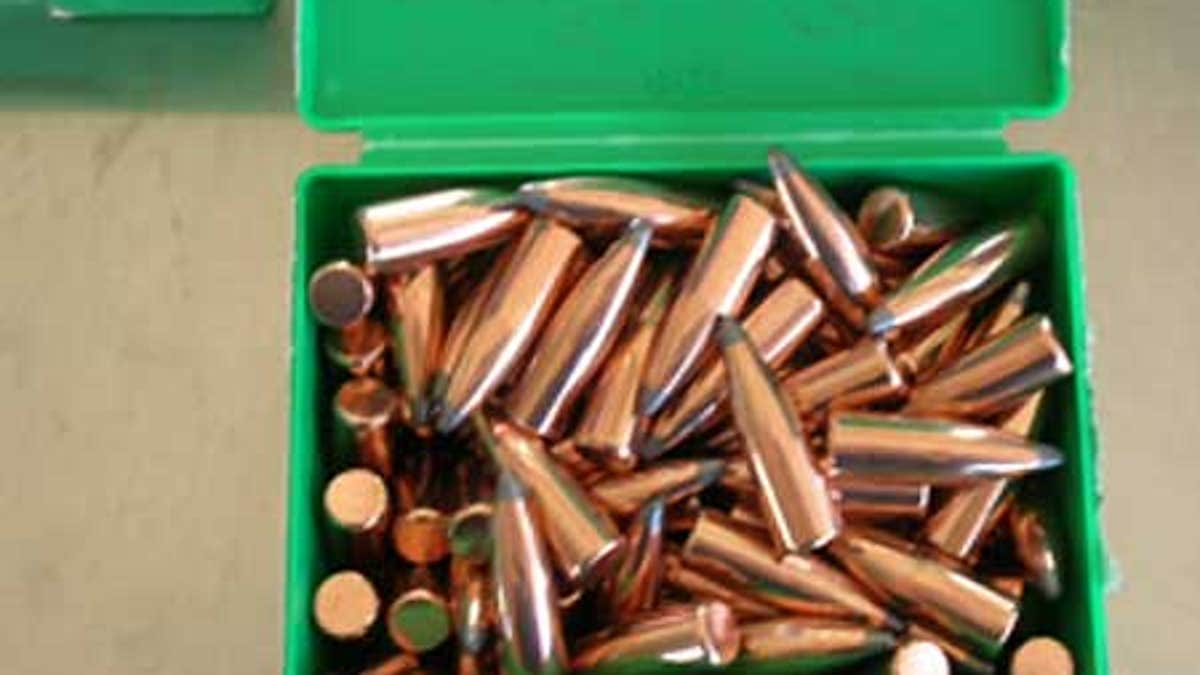
U.S. Customs and Border Protection officers seized 9,000 gun primers from a Mexican registered outbound commercial tractor-trailer. (CBO)
As the violence in Mexico spikes, four major drug cartels that are fighting each other for territory and smuggling routes may be forming alliances with each other.
Currently three cartels control most of the border region between the U.S. and Mexico. But the federation, or Sinaloa cartel, is fighting for a larger area of the border and may be negotiating a truce with the Gulf cartel.
Click here to see video on Housley's report on Mexico's cartels.
Fred Burton, vice president for counterterrorism and corporate security at Stratfor Global Security says it's not surprising these groups are trying to join forces.
"We've seen reports coming out of Mexico that cartels have set down and tried to do business together because of, let's face it, pressure. Whether that be law enforcement pressure or military pressure, (it) is bad for business."
The Sinaloa traditionally has used southern Arizona as its avenue to smuggle drugs into the United States. But these once-open borders have been shut down by U.S. Border Patrol agents, who have increased patrols and put up fences. Agents say it only makes sense that the Sinaloa cartel would fight for new territory and at the same time look for a new partner.
If the Sinaloa struck an alliance with the East Coast-based Gulf cartel it would gain another smuggling route into the United States and an important ally in the war against the Mexican military.
In the last two years, Mexico has deployed 50,000 Mexican troops and federal police officers along the northernmost regions in order to confront the drug cartels, after President Felipe Calderon pledged to tackle the growing problem. His strategy has been met with varying success.
President Obama said Wednesday that he was looking at possibly deploying National Guard troops to contain the violence, and the administration has been watching cartel movement closely.
"If they have to adapt their tactics, whether that means negotiating with another cartel, or whether it means giving up certain trafficking routes — which we have also seen — all of those are a reflection of effective strategy to pressure these cartels," said Deputy Assistant Secretary of State Roberta Jackson.
The drugs cartels are now claiming they have as many as 100,000 foot soldiers at their disposal — which include a growing number of deserters from the Mexican military. This has turned this conflict into what some experts call an evenly-matched fight. Others describe it as a propaganda battle.
"It's not particularly surprising to see them claiming thousands and thousands of people in their employ, so that they can try and frighten the population, intimidate people including the security forces against whom they are operating," Jackson said.
But Burton, who studies the unrest daily, said more disturbing than the sheer number of foot soldiers, is the cartels' firepower.
"I think the most frightening aspect of this, if you look at this, are not so much the numbers of 100,000. It's the tactical capabilities that the cartels have, for example in places like Reynosa when they are able to muster RPG's and law rockets."
Click here to read more about the drug cartels' weapons.
Whether the cartels work together or not, the bloodshed in Mexico is expected to get worse, as the U.S. clamps down, secures border areas and tried to stem the flow of narcotics.
At the San Ysidro checkpoint near San Diego, Border Patrol agents seized some 700 pounds of cocaine from 2007 to 2008, a massive increase from under one pound the year before. And busts this year have continued to climb another 44 percent.
In some seized vehicles, agents discover drugs stuffed into every possible crevice by Mexico's powerful drug cartels. Cocaine is being found inside cassette and CD players, packed into fenders, even strapped around the engine. This is an indication that the traditional smuggling lanes are being redefined, and despite efforts to stem the flow, the drug war rages on.
"The creativity is just endless. If there is an empty void in that vehicle somewhere, I would imagine there is a smuggler out there looking to utilize that, to sneak contraband into this country," Rick Barlow of U.S. Customs and Border Protection.
Todd Hoffman, acting director of Customs and Border Protection field operations in San Diego said: "It's the whole balloon mentality with deeper concealments, that's what we've been seeing."
As new walls go up, the cartels are forced to find new routes north, which — in the case of cocaine — brings them back to where they started: the San Diego area. These smuggling routes, which had been used for years, were abandoned in favor of easier ways into the U.S.
"A lot of them originated in San Diego. Their roots are in San Diego and as we gain control of the border across the nation, I think some of these smuggling operations are coming back to their roots. Coming back to the San Diego area. This is home to them," said Barlow.
Back home — of sorts — because of the crackdown on once wide open areas of the border in eastern California, southern Arizona and New Mexico are closing up.
And it's not just what's coming north, but what the American drug demand is shipping south. Last year Mexican immigrants sent remittances home totaling about $25 billion dollars, while estimates of drug money flowing south to the cartels total up to $39 billion dollars, many times in large bundles of cash.
Federal agents say better training, intelligence and scanning equipment has helped them crackdown on smuggling in both directions. The Mexican government tells Fox News they are also trying to increase their enforcement, while at the same time battling the cartels for control along the San Diego border.
